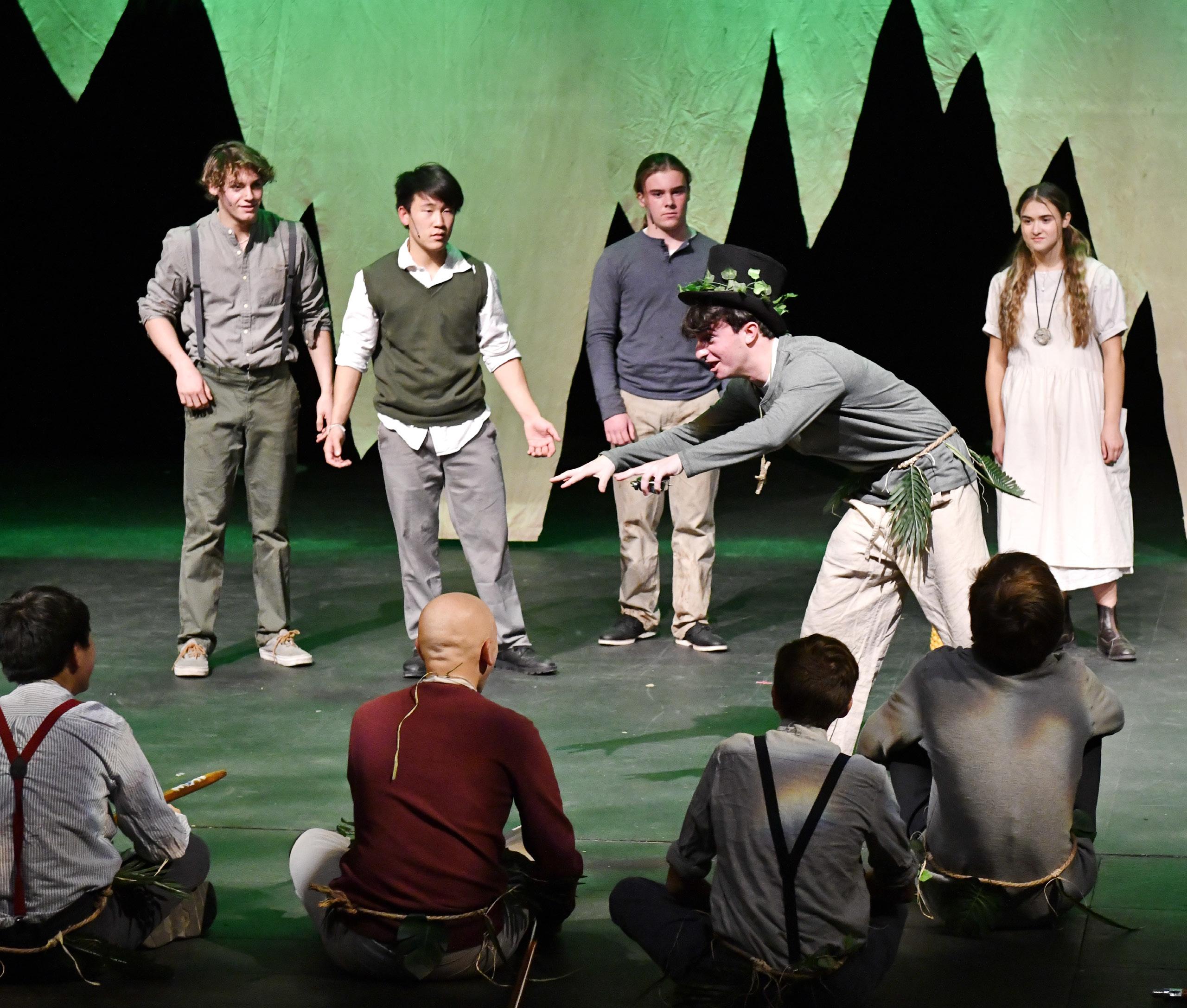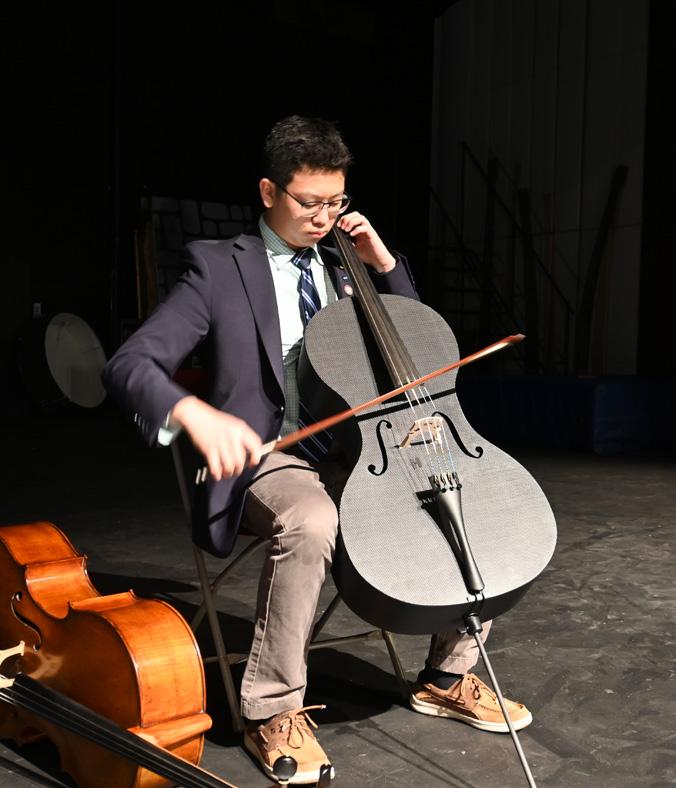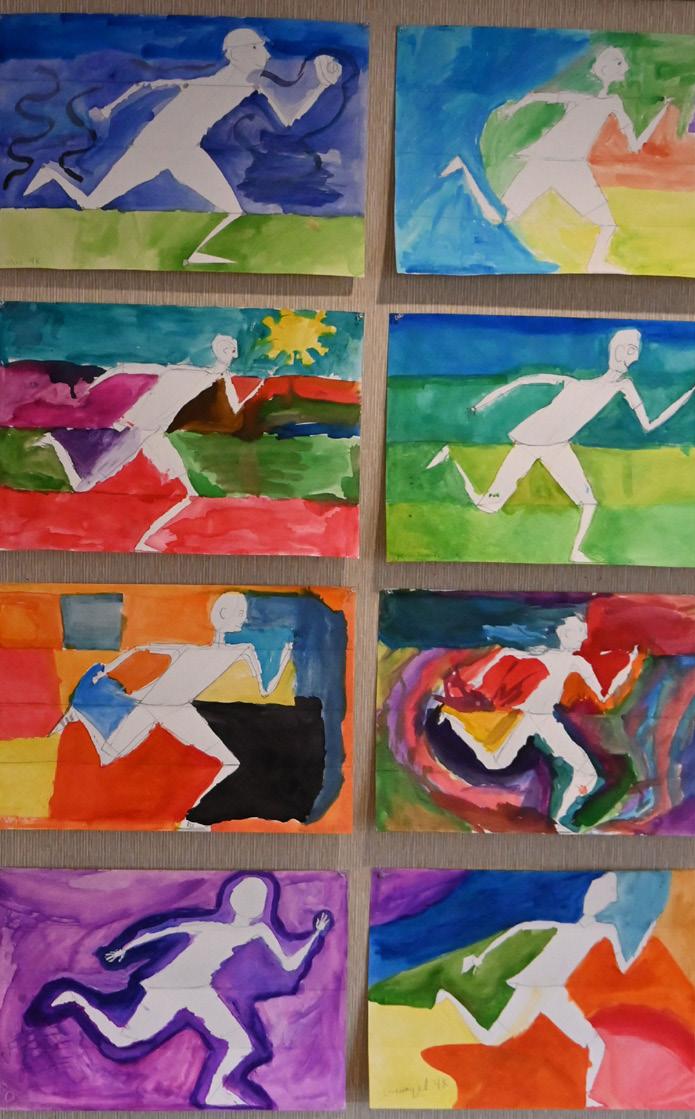
5 minute read
Arts
From Nov. 19 to 21, The Haverford School‘s Performing Arts Department presented “Peter and the Starcatcher,” the School’s first major performance before an in-person audience since the outbreak of COVID-19. The play explored the origin stories of J. M. Barrie’s beloved characters Peter Pan and Captain Hook, portrayed by Fifth Formers Evan Wang and Thomas Pendergast, respectively. Directed by Darren Hengst, The Grace and Mahlon Buck Chair in Performing Arts, with stunning work on the set design led by the School’s Production Manager and Technical Director Dex Woodward, the play—packed with action, adventure, and intrigue—celebrated the School’s triumphant return to the stage.
Sixth Former completes three-year process of printing a cello
Upper School student Elijah Lee collaborated with Haverford’s Orchestra Director Alfred Goodrich to 3D print a cello. The project, which Lee started as a Third Former, sought to create a low-cost cello out of carbon fiber, but still preserve the sound of a traditional cello.
The instrument is jet black and sounds just like a traditionally-made cello. The project married Lee’s two passions—the cello and engineering—and led to him founding Forte3D with Goodrich. The company has a focus on creating other fine instruments using the 3D printing process.
“As a cellist who is also heavily interested in engineering disciplines, being able to unite the two intrigued me,” said Lee. “We wanted to create classical string instruments of the highest possible quality for a fraction of the cost of a conventionally-made fine instrument.”


Fourth and fifth grade student artwork displayed in Centennial Hall
The intersection of art and science: creating a 3D atom
Form IV boys in Will Leech’s chemistry class had a guest teacher as they studied the atomic structure and orbitals: Chair of the art department Chris Fox.
Leech and Fox developed a cross-curricular project for the students to help them understand the structure and behavior of the atom using a creative process.
“Often the greatest challenge we face is representing three dimensional objects, such as atoms, on a two dimensional piece of paper,” explained Leech. “Working at the highest level of both art and chemistry, this project stretched and challenged the student’s thinking in completely new ways.”
The boys were asked to push the edges of how the atom is currently visually represented and developed through work in their chemistry class. Based on their understanding and use of the creative process, they were asked to represent their new understanding visually. The boys wrestled with complex mathematical representations of the atom along with color theory and perspective to produce individual pieces of artwork to represent new understandings of atomic structure.
Students came to the art studio and were presented with the first part of this challenge through a presentation created by Leech and Fox. The presentation showed the history of how the atom has been illustrated over time as examples of the connections between the work of visual artists and scientists. The current representation of the atom tries to suggest the “cloud of possibilities” of where the electrons orbiting might exist. This model was developed almost one hundred years ago. Students were challenged to think about an appropriate updated representation of the atom.
The boys were given some possible materials to work with, including watercolors, watercolor pencils, and graphite pencils, and given time to experiment with them as they brainstormed ideas. Fox and Leech worked with students individually as they developed ideas, each offering advice from their own perspective and area of expertise.
Once students had developed what they felt was a reasonably accurate version of their chosen visual description, they were given a piece of illustration board on which to develop a more “finished” version of their atom. Teachers and students discussed how even these more developed works could still be considered “first drafts” as often students realized that there were other choices they could have made to make their scene even more powerful. This fall, the artistic talents of the fourth and fifth grade students were on full display in Centennial Hall. The exhibit is made of mostly hand drawings in which the boys repeatedly, methodically, and mechanically sketch and erase two dimensional shapes. The goal is for the students to become acquainted with the constant exercise of drawing verticals, horizontals, diagonals and curves, and develop their fine motor skills.
“Every human figure we draw in the art room starts with a stick figure with joints,” explains Lower School art teacher Antonio Fink. “I remind the boys to ‘draw it light until you get it right.’ They draw, erase, redraw, erase, and redraw until they finish.”
Pencil drawings were the first step in this project. The boys then used watercolors to add color to the background. In this lesson, the boys learned how color affects a drawing, the different approaches to using color, and how the background changes the mood of a painting.


Art and ancestral languages
Last summer, Middle School art teacher Doah Lee traveled to her native South Korea to learn the traditional Korean techniques of lacquer and silver wire inlay. The School’s Summer Institute for the Growth of Haverford Teachers and Staff (SIGHTS) supported her trip, which directly translates to the enhanced quality of education in her classroom.
The box Lee created with the Korean Cultural Heritage Foundation mixes the Korean symbols of her youth with the American interpretations she has encountered. Central on the box’s lid is the Korean hand gesture for love, which is often mistaken for the American gesture for “money.” She plays with that misunderstanding, replacing the implied heart between the fingers in the Korean understanding with the Korean symbol for rice, a traditional form of currency.
The Korean Cultural Heritage Foundation is the only studio in the world that continues to teach Korean silver wire inlay, so Lee’s instructors expressed excitement about Lee’s participation in the course and emphasized the importance of sharing this nearly-lost tradition with her American students. As Lee says, the boxes decorated in Korean symbols for wealth and longevity “express the hopes of my ancestors.”
Back in her Haverford School classroom, Lee creates projects that guide the boys in their technique, while inviting them to express themselves. As Lee explains, “Art is a visual language. I’m teaching them how to speak so they can find their own voices and make their own projects.”
Recently, the boys chose three objects that they felt spoke to their identity. They then photographed the objects, applied color filters in Photoshop, and then painted their still life images of the objects. Lee empowers the boys to create their own projects, asking them “What dialogue do you want to create with your viewer?”
UPCOMING ARTS EVENTS
Upper School Musical “Something Rotten!”
March 11-13, Centennial Hall
Middle School Musical “The Addams Family”
April 22-24, Centennial Hall








